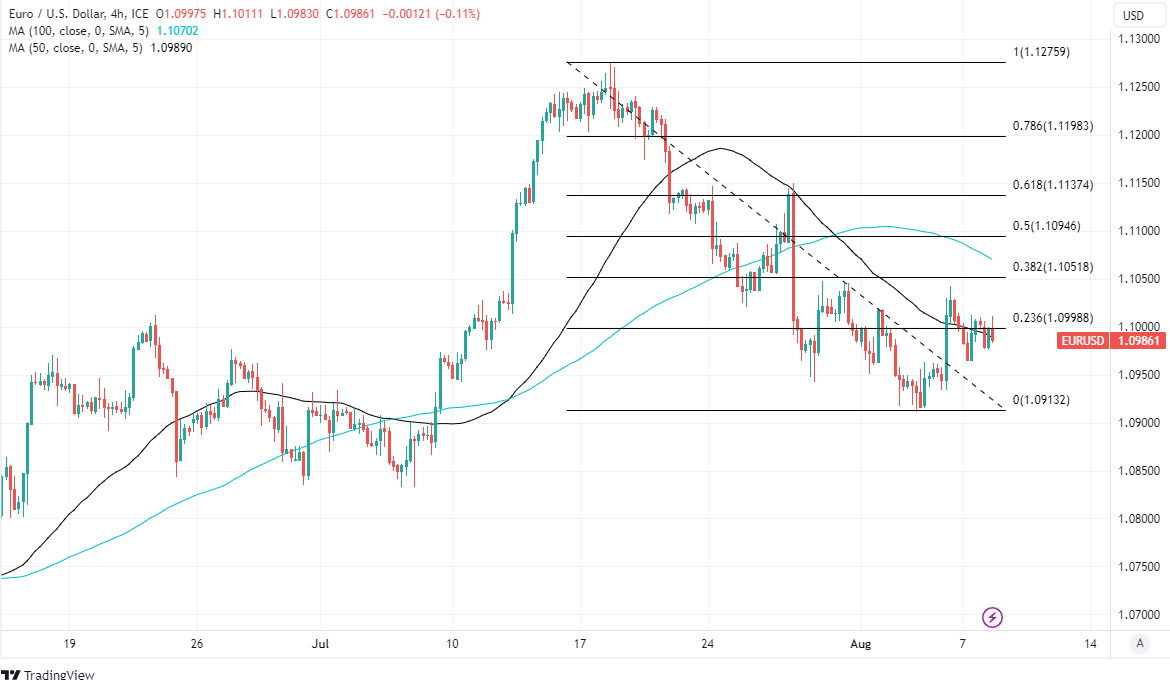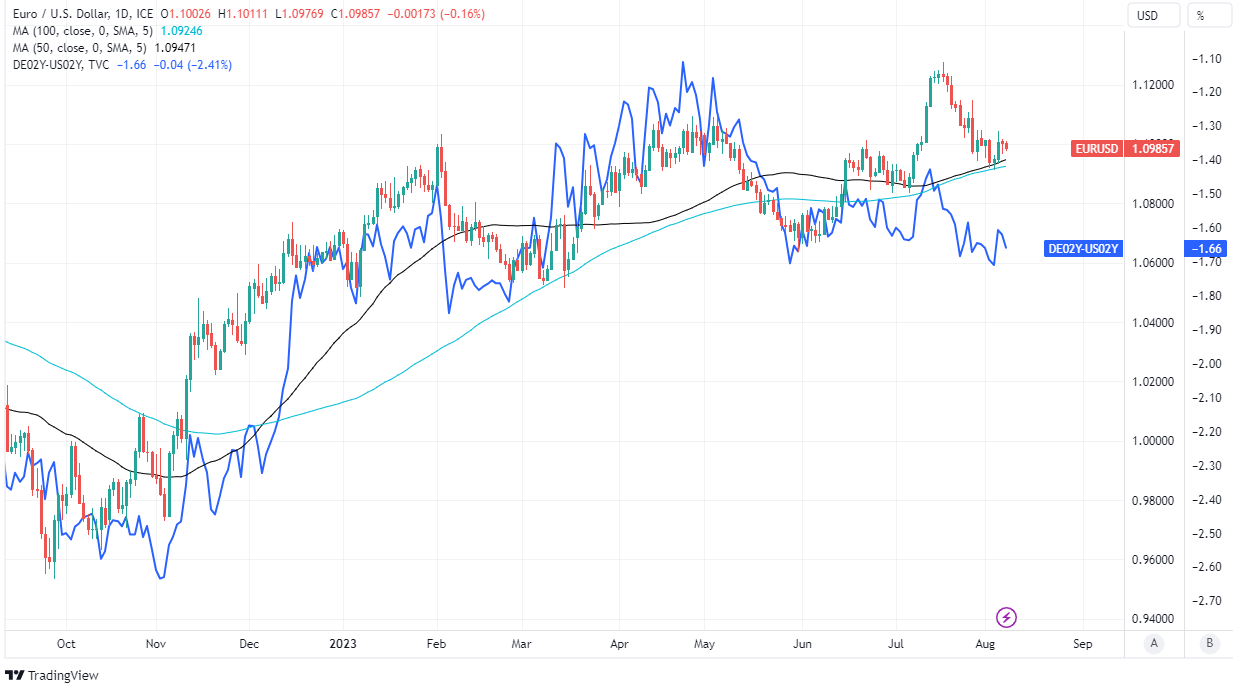EUR/USD Rate’s Technical Inflection Hints of Uncertain Outlook as U.S. CPI Looms
- EUR/USD supported near 1.0934, 1.0912, 1.0835 short-term
- Technical resistances around 1.10 & 1.1050 frustrating rallies
- U.S. inflation figures, bond yields, technical inflection in focus

Image © European Central Bank
The Euro to Dollar exchange rate trades within the upper end of its year-to-date range but while the technical backdrop on the charts hints at an uncertain outlook, the path ahead for the single currency could become clearer with the release of U.S. inflation figures for July later in the week.
Europe’s single currency edged higher against most counterparts including a broadly stronger Dollar on Tuesday after simultaneous losses for stock and bond markets around the world stymied in an earlier rally close to technical resistances near the 1.10 handle during the opening session of the week.
“Near -term resistance is seen at 1.1014. Above 1.1055 can increase the likelihood we may have seen a more important low. Although we need to see above the recent “outside day” high at 1.1152 to reassert the broader uptrend,” says David Sneddon, head of technical analysis at Credit Suisse.
“A close below 1.0934/24 and then Friday’s low at 1.0912 though would warn of a potentially more important reversal lower with support then seen next at the late June and July lows at 1.0835/33, probably now as far as the long -term 200 -day average,” he writes in a Monday review of the charts.
Dollar rates fell previously with Euro pairs rising after the latest non-farm payrolls report indicated on Friday overall employment growth tailed off further in the U.S. last month while also suggesting average rates of pay growth remained near recent high levels.
Above: Euro to Dollar rate shown at 4-hour intervals with Fibonacci retracements of fall from July high indicating possible areas of technical resistance.
“We did hear contrasting comments from FOMC members yesterday on the potential for further hikes. Federal Reserve Governor Bowman, who typically leans hawkish, emphasised the potential for further hikes,” writes Jim Reid, chief U.S. economist at Deutsche Bank, in a Tuesday economics commentary.
“By contrast, in an interview published by the New York Times, New York Fed President Williams said that “monetary policy is in a good place” and “whether we need to adjust it in terms of that peak rate — but also how long we need to keep a restrictive stance — is going to depend on the data,” he adds.
One factor weighing specifically on Euro pairs previously on Monday may have been Destatis figures suggesting an ongoing decline in German industrial production deepened in June and the second quarter even as the overall contraction of Europe’s largest economy appeared to fade during the quarter.
“German industry remains in rough waters. Last year’s energy price shock and the forced green transformation add to the weakness in US and Chinese demand for manufactured imports and to the inventory correction in global manufacturing,” says Salomon Fiedler, a senior economist at Berenberg.
“Whereas the Eurozone economy as a whole will probably stagnate for the reminder of 2023, supported by still rising demand for services, we expect Germany’s manufacturing-heavy economy to fall back into a mild recession in H2 2023,” he adds in a Monday research briefing.
Monday’s industrial figures followed last week’s release of Euro Area data suggesting the continental economy grew 0.3% in the second quarter but by a lesser 0.1% if the effects of accounting quirks in Irish and French economic numbers are set aside.
Above: Quantitative model estimates of trading ranges for the week ahead. Source: Pound Sterling Live.
But whatever the data did or didn’t do for the single currency, the Euro to Dollar rate is likely to be sensitive to the outcome and implications of Thursday’s U.S. inflation figures for July and given the technical inflection point on the charts, these might be a formative influence on the outlook.
The economist consensus is for the annual U.S. inflation rate to rise from 3% to 3.3% for July on Thursday in its first increase for more than a year as statistical ‘base effects’ are unwound, while the more important core inflation rate is expected to fall from 4.8% to only 4.7% for last month.
To the extent that the data lifts U.S. government bond yields it might also have the effect of weighing on the Euro to Dollar rate if it leads to a further interest rate advantage for the Dollar and vice versa, though the relationship between EUR/USD and the EU-U.S. bond yield spread has weakened in recent months.
“Historically, a steeper UST yield curve tended to support the USD especially when its relative rate appeal across G10 FX and/or US sovereign credit risks remained little-changed,” says Valentin Marinov, head of G10 FX strategy at Credit Agricole.
“Indeed, following the recent developments, our short-term fair value estimates for the USD have risen vs the EUR, JPY and GBP and suggest that there are upside risks for the currency in the near term,” Marinov writes in a Monday research briefing.
Above: Euro to Dollar rate shown at daily intervals with spread or gap between 02-year German and U.S. government bond yields.



